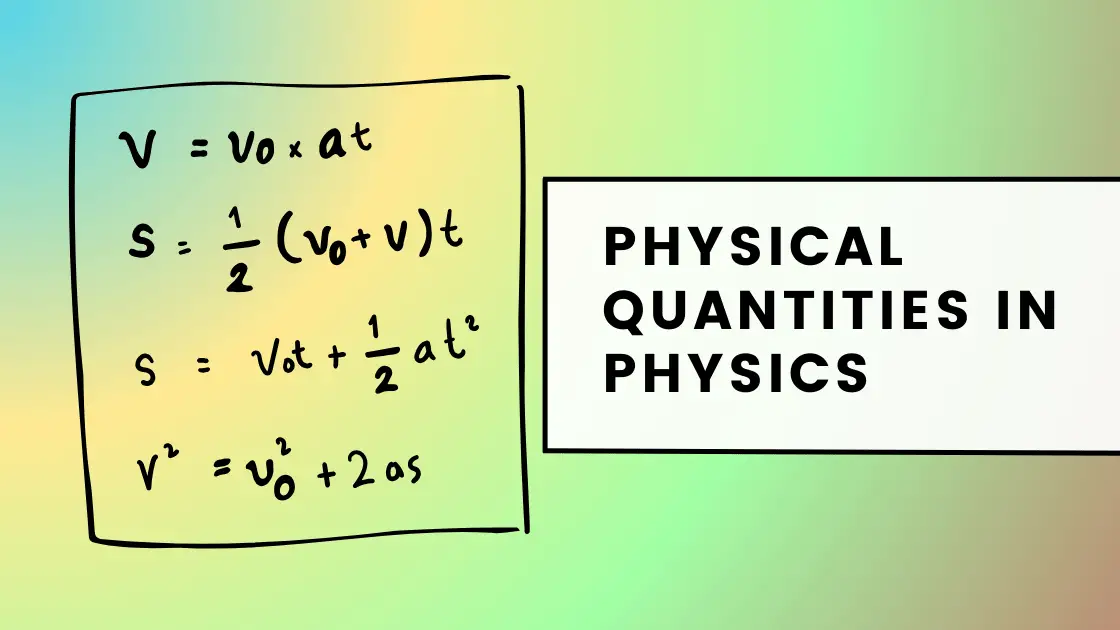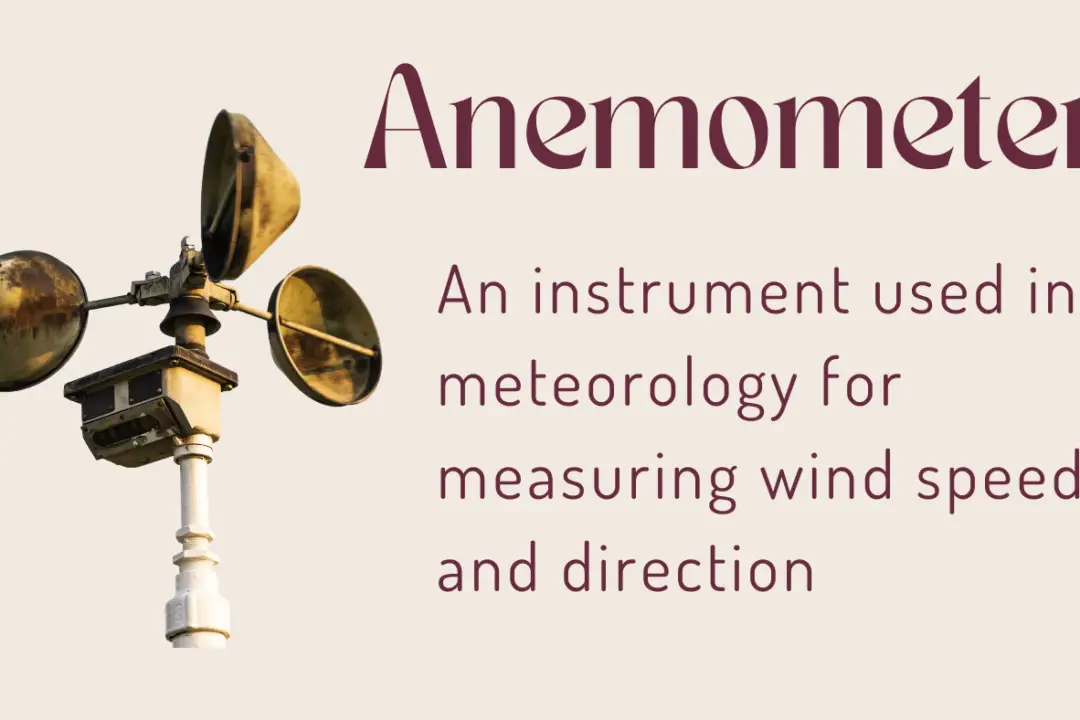Physical quantities are fundamental in understanding different phenomena in the field of physics. In this article, students will learn how these quantities are categorized into scalar and vector types, as well as fundamental and derived quantities.
Physical Quantities
Physical Quantities Definition
A physical quantity is a measurable property of a material or system. It is expressed as a numerical value multiplied by a unit of measurement. For example, mass \( m \) can be represented as \( m = n \, \text{kg} \), where \( n \) is the numerical value and \( \text{kg} \) is the unit.
Physical Quantities Meaning
Physical quantities are building blocks of physics in terms of which laws of physics are framed and described. For a physical quantity to be fully defined, it must be precisely measured and meet one of the following criteria:
(a) Numerical Value Only: This category includes dimensionless ratios such as the refractive index and dielectric constants.
(b) Magnitude Only (Scalars): These are quantities that have numerical values accompanied by units, examples of which include mass, charge, and current.
(c) Magnitude and Direction (Vectors): Quantities in this category, such as velocity, displacement, and torque, are characterized by both their magnitude and their direction.
This classification ensures that each physical quantity is adequately specified for scientific analysis and interpretation.
Physical Quantities Formula
Let us learn about the components of a physical quantity.
The value of a physical quantity \( Z \) is expressed as the product of a numerical value \( \{Z\} \) and a unit \( [Z] \):
\[
Z = \{Z\} \times [Z]
\]
For instance, if \( Z \) is “2 meters,” then \( \{Z\} = 2 \) is the numerical value and \( [Z] = \text{meter} \) is the unit.
Symbols and Nomenclature
International standards like ISO/IEC 80000 provide guidelines for the symbols to be used for different physical quantities. For example, mass is represented by \( m \) and electric charge by \( Q \).
Physical Quantities Examples
- Length: Measured in meters $(m)$, it describes the extent of an object along a particular dimension.
- Time: Measured in seconds $(s)$, it quantifies the duration of events.
- Mass: Measured in kilograms $(kg)$, it represents the amount of matter in an object.
- Velocity: Measured in meters per second $(m/s)$, it describes both the speed and direction of an object’s motion.
- Acceleration: Measured in meters per second squared $(m/s^2)$, it indicates the rate of change of velocity.
- Force: Measured in newtons $(N)$, it describes the interaction that changes the motion of an object.
- Temperature: Measured in kelvin $(K)$, it indicates the thermal state of a system.
- Electric Charge: Measured in coulombs $(C)$, it describes the electrical property of particles like electrons and protons.
Physical quantities list
Given below is a table that provides a comprehensive list of physical quantities commonly used in physics, along with their symbols and SI units.
| Physical Quantity | Symbol | SI Unit | Type | Branch of Physics |
|---|---|---|---|---|
| Length | $l$ | meter (m) | Fundamental | Classical |
| Mass | $m$ | kilogram (kg) | Fundamental | Classical |
| Time | $t$ | second (s) | Fundamental | Classical |
| Electric Current | $I$ | ampere (A) | Fundamental | Electromagnetism |
| Thermodynamic Temperature | $T$ | Kelvin (K) | Fundamental | Thermodynamics |
| Luminous Intensity | $I_v$ | Candela (cd) | Fundamental | Optics |
| Amount of Substance | $n$ | mole (mol) | Fundamental | Chemistry |
| Velocity | $v$ | $\text{m/s}$ | Derived | Classical |
| Acceleration | $a$ | $\text{m/s}^2$ | Derived | Classical |
| Force | $F$ | Newton (N) | Derived | Classical |
| Energy | $E$ | joule (J) | Derived | Classical |
| Power | $P$ | watt (W) | Derived | Classical |
| Electric Charge | $Q$ | coulomb (C) | Derived | Electromagnetism |
| Electric Field | $E$ | $\text{N/C}$ | Derived | Electromagnetism |
| Magnetic Field | $B$ | Tesla (T) | Derived | Electromagnetism |
| Pressure | $P$ | Pascal (Pa) | Derived | Fluid Mechanics |
| Frequency | $f$ | hertz (Hz) | Derived | Waves |
| Angular Velocity | $\omega$ | $\text{rad/s}$ | Derived | Classical |
| Entropy | $S$ | joule per kelvin (J/K) | Derived | Thermodynamics |
| Inductance | $L$ | Henry (H) | Derived | Electromagnetism |
| Capacitance | $C$ | Farad (F) | Derived | Electromagnetism |
| Resistance | $R$ | ohm ($\Omega$) | Derived | Electromagnetism |
This table is not exhaustive but covers the most commonly used physical quantities in various branches of physics.
Classification of Physical Quantities
Physical quantities are primarily classified into scalar and vector types based on the presence or absence of a directional component. They are further categorized as fundamental or derived quantities, depending on whether they can be expressed in terms of other basic quantities.
Scalar and Vector Quantities
The classification into scalar and vector quantities is determined by the absence or presence of a directional component.
Scalar Quantities
Scalars are physical quantities that are characterized solely by their magnitude and unit, devoid of any directional component. For instance, mass, time, and temperature are scalar quantities.
\[
\text{Example: Mass (m)} = 5 \, \text{kg}
\]
Vector Quantities
In contrast, vectors possess both magnitude and direction. Mathematically, they are often represented as arrows with specified length and direction. Examples of vector quantities include velocity, force, and acceleration.
\[
\text{Example: Velocity (v)} = 5 \, \text{m/s in the east direction}
\]
Fundamental and Derived Quantities
The criteria for categorizing as fundamental or derived quantities depend on whether the physical quantity can be expressed in terms of other basic quantities.
Fundamental Quantities
Fundamental or base quantities are those that cannot be derived from any other quantities. There are seven such quantities: length, mass, time, electric current, thermodynamic temperature, luminous intensity, and the amount of substance.
Derived Quantities
Derived quantities can be formulated in terms of fundamental quantities. For example, velocity is a derived quantity because it is dependent on the fundamental quantities of length and time.
\[
\text{Velocity (v)} = \frac{\text{Displacement (s)}}{\text{Time (t)}} \Rightarrow \left[ \frac{\text{m}}{\text{s}} \right]
\]
Dimensions, Units, and Kinds
Dimensions
- In the context of physical quantities, the term “dimension” refers to the nature or type of quantity being measured. For example, length, time, and mass are different dimensions.
- Dimensions help us understand what a particular physical quantity represents and how it can be related to other quantities.
- Mathematically, dimensions are often represented using symbols like \( L \) for length, \( T \) for time, and \( M \) for mass.
Question: What is the dimension of speed?
Answer: Speed has the dimension of length divided by time, often represented as \( \frac{L}{T} \).
Units
- Units are the standard measures used to quantify a physical quantity. For instance, the meter is the unit of length in the International System of Units (SI), and the second is the SI unit for time.
- Units give meaning to numerical values; for example, saying a table is 2 meters long is more informative than saying it is just “2.”
Question: What are the SI units for length, time, and mass?
Answer: The SI units are meter (m) for length, second (s) for time, and kilogram (kg) for mass.
Kinds
- The concept of “kind” goes beyond dimensions and units to include additional properties that allow for the comparison of quantities.
- The term kind is used to differentiate between physical quantities that may share the same dimensions and units but are fundamentally different in what they represent. Essentially, “kind” adds an extra layer of specificity to a physical quantity.
Understanding the kind of physical quantity is crucial for the following reasons:
- Avoids Confusion: It helps in avoiding mistakes where one quantity is wrongly used in place of another.
- Enhances Precision: It allows scientists and engineers to be more precise in their calculations and analyses.
- Facilitates Communication: When experts talk about physical quantities, knowing the “kind” ensures that everyone has a clear understanding of what is being discussed.
Example to illustrate the concept of “kinds” in physical quantities
Example: Work and Torque
Both work and torque are physical quantities that have the same dimensions (\( ML^2T^{-2} \)) and can be measured in the same units (joules in the SI system). However, they are not of the same “kind” because they describe different aspects of motion and force.
- Work: This quantity describes the energy transferred when a force is applied over a distance. It’s often encountered in linear motion scenarios, like pushing a box along the floor.
- Torque: This quantity describes the tendency of a force to rotate an object around an axis. It’s relevant in rotational motion, like turning a wrench to tighten a bolt.
Why They Are Different ‘Kinds’?
Even though work and torque can be measured in joules, you can’t use them interchangeably:
1. Different Applications: Work is used in the context of linear motion, while torque is used in rotational motion.
2. Different Formulas: Work is calculated as \( \text{Work} = \text{Force} \times \text{Distance} \), whereas torque is calculated as \( \text{Torque} = \text{Force} \times \text{Lever Arm} \).
Question: Can work and torque be used interchangeably because they have the same dimensions and units?
Answer: No, they cannot be used interchangeably because they are not of the same “kind” and describe different types of motion.
Questions and Answers
What distinguishes fundamental from derived quantities?
Fundamental quantities are the foundational building blocks and cannot be derived from other quantities. In contrast, derived quantities can be formulated in terms of fundamental ones.
Is time a scalar or a vector quantity?
Time is a scalar quantity as it has only magnitude and no direction.
Can physical quantities be negative?
Scalar quantities like temperature cannot be negative in certain units (e.g., Kelvin). However, vector quantities can have negative values, indicating the opposite direction.
What are the seven fundamental quantities?
The seven fundamental quantities are length, mass, time, electric current, thermodynamic temperature, luminous intensity, and the amount of substance.
How are units and dimensions related?
Dimensions provide a qualitative understanding of the physical nature of a quantity, while units give a quantitative measure.







